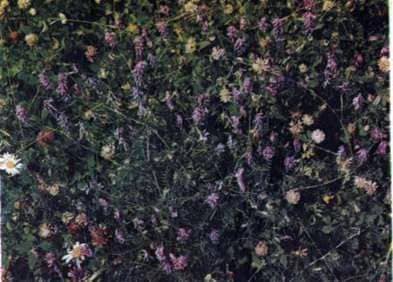
Sweet, fragrant nectar is fed by many insects: bumblebees, all sorts of flies, butterflies, wasps. But the greatest amount of nectar is harvested and honey bees are brought into their nests. During flowering of gardens and meadow grasses, in linden groves and on buckwheat field there is an even, incessant, unsteady buzz of nectar extracting worker bees. The bee has to process a lot of flowers, until it fills its honey stomach with nectar.
To collect a kilogram of nectar from buckwheat, bees must visit about two million flowers! In the midst of the flowering of such powerful nectarines as linden and kiprei, in warm weather strong, well-to-do provided honeycomb families can collect in a day 20-25 kg of nectar. It’s hard to imagine such small insects able to get and bring home such a fantastic amount of sugary liquid.
Nectar, as is known, is the secret of special nectariferous glands of flowers. It is isolated plants in the prime of their strength, ready to produce offspring.
Nectar contains substances that have the most valuable nutritional and healing properties – sugars, microelements, protein, vitamins, pigments, antibiotics. Almost the entire periodic system of Mendeleev elements is represented in it: potassium, sodium, calcium, magnesium, iron, copper, zinc, chlorine, phosphorus, manganese, kolbat, silver, iodine and many others.
From nectar to honey, the path is rather complicated. On the “technological line”, nectar as raw material comes immediately, as soon as it enters the mouth and honey bee of the bee. Here he is exposed to the digestive juices of a bee that break down complex sugar into simple sugars – glucose and fructose. In the tank of the ventricle, the nectar also loses some of the water. Work on nectar continues in the cell for a whole week, not for an hour, not stopping day or night. Almost the entire family takes part in this. As a result of large efforts of bees, the amount of water in nectar decreases almost fourfold, honey thickens, becomes heavier, enriched with enzymes, acids. Its taste changes, it becomes sweeter, color becomes more saturated. The aroma also intensifies. Honey, as it were, insists on the hive, absorbs the odors of pepper, propolis, wax.
Mature, finished to readiness honey bees tightly sealed in honeycomb wax. Each cell filled with honey, like a tin can, is hermetically sealed with a wax lid: air does not penetrate into the clogged cell with honey, moisture does not enter. So it is stored, until the bees do not need it.
Honey is the main food of bees. During the year, a bee family, good in strength, consumes it up to 120 kg. The most part is spent in the spring and summer, when bees lead the most energetic life: they grow brood, build honeycombs, collect nectar and pollen. Surplus honey belongs to the beekeeper for works, cares and love for winged toilers.
Bees collect honey from all colors. However, naturally, preference is given to those that secrete more nectar. They are usually found by intelligence bees. At their signal pickers switch to more nectariferous flowers.
Plants that are highly nectar-productive, are found in spring, summer and autumn. They are among the grasses, bushes and trees. With strong nectarones, bees harvest food for a whole year, sometimes even for several years. After all, there are different years – arid and cold, rainy, when you can not get food from bees.
Unlike other animals bred by humans, only honey bees prepare their own food for the winter. A person who is painless for bees can use surplus honey. And only in hungry, mediocre years have to replenish their food.
Отделы тела у пчелы. Весеннее развитие пчелиной семьи.
Young Beekeeper